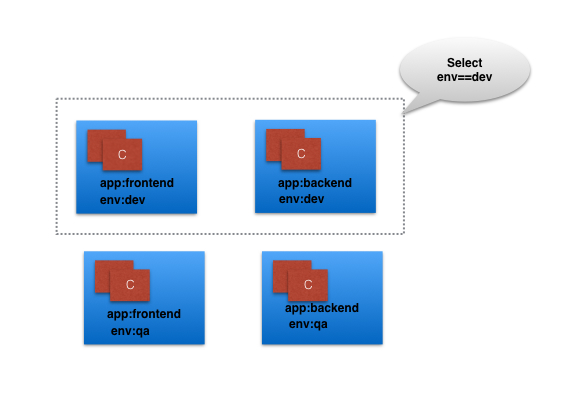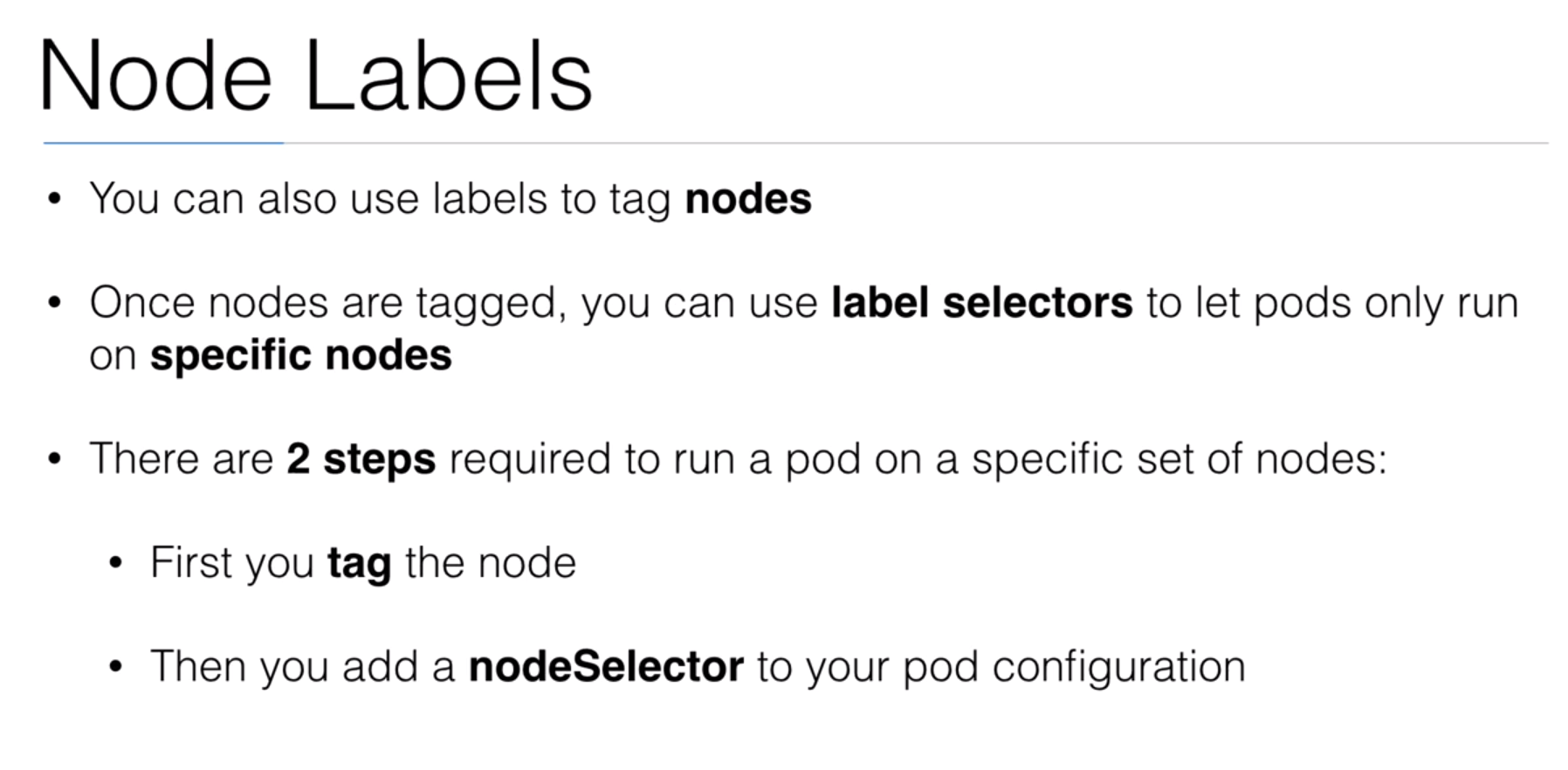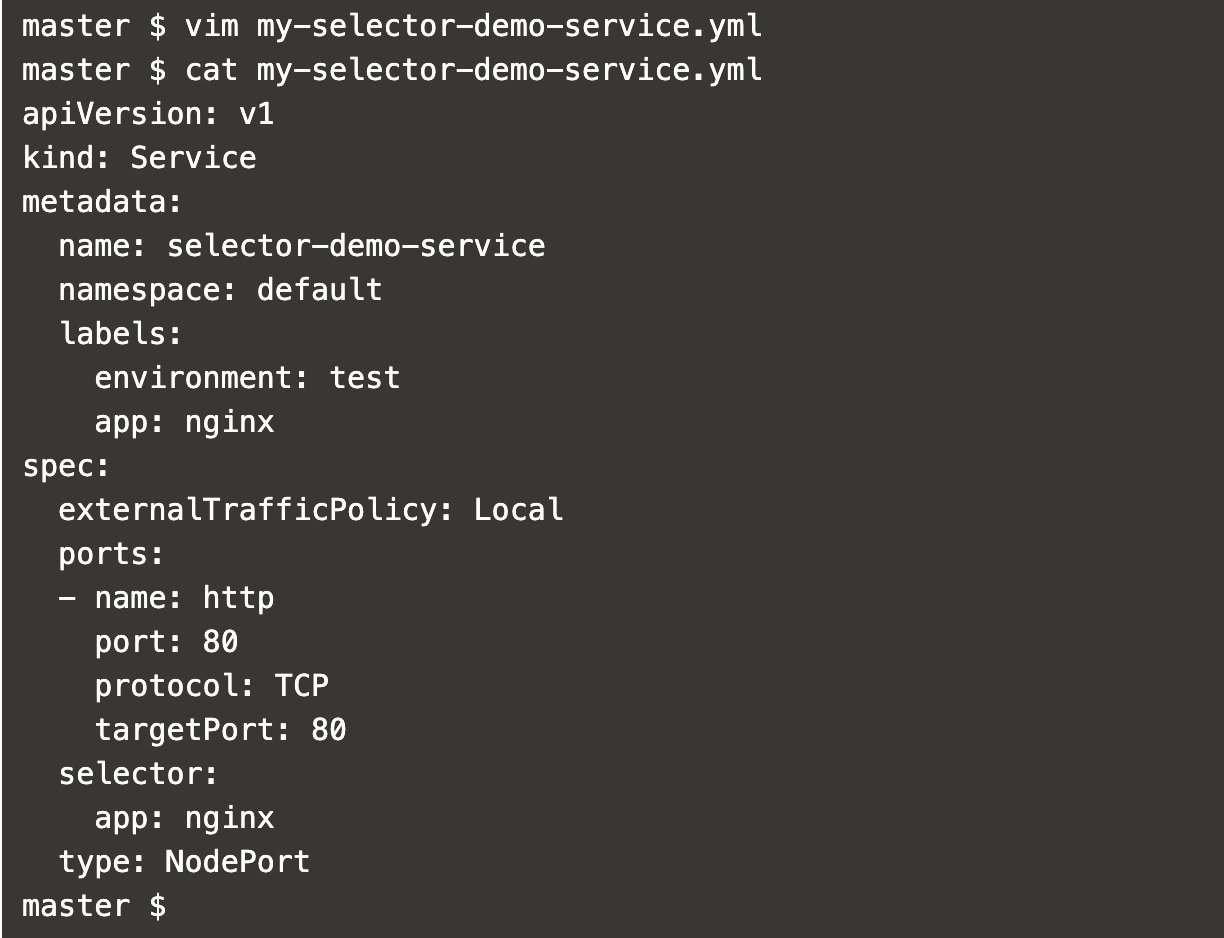40 labels and selectors in kubernetes
Kubernetes Labels & Selectors - Kubernetes - Wisdom Jobs Selectors. Labels do not offer individuality. In overall, we can say numerous objects can carry the same labels. Labels selector are core grouping primitive in Kubernetes. They are used by the users to choose a set of objects. Kubernetes API currently supports two type of selectors −. Equality-based selectors; Set-based selectors; Equality ... Understanding Labels, Selectors and Annotations in Kubernetes There are two kinds of selectors. Equality-based and Set-based selectors. Equality-based requirement Equality based selectors help you filter resources equal to a certain key and value. You would following operators for equality based-requirements: = == != Example # this command would give us all resources with the env =prod label
Learn Kubernetes Labels By Following Examples - Densify K8s selectors allow users to filter objects based on labels, and can be used by the Kubernetes platform as well. user perspective, K8s labels and selectors can manipulate objects such as: Pods Nodes Services Secrets Ingress Resources Deployments Namespaces Why do we need to use Kubernetes labels?

Labels and selectors in kubernetes
Labels and Selectors - Kubernetes - GitLab The label selector is the core grouping primitive in Kubernetes. The API currently supports two types of selectors: equality-based and set-based . A label selector can be made of multiple requirements which are comma-separated. In the case of multiple requirements, all must be satisfied so the comma separator acts as a logical AND ( &&) operator. kubernetes.io › docs › conceptsManaging Resources | Kubernetes Apr 27, 2022 · You've deployed your application and exposed it via a service. Now what? Kubernetes provides a number of tools to help you manage your application deployment, including scaling and updating. Among the features that we will discuss in more depth are configuration files and labels. Organizing resource configurations Many applications require multiple resources to be created, such as a Deployment ... A Kubernetes Guide for Labels and Selectors | Datree.io Labels can be used by both Kubernetes and homo-sapiens to organize and to select subsets of objects. When dealing with Kubernetes config files, labels are always added under the "metadata" section of the manifest. Labels vs annotations Annotations are also key-value pairs that are attached to objects and are used to describe Kubernetes resources.
Labels and selectors in kubernetes. Labels and Selectors in Kubernetes - HowtoForge To get Pods matching a label of our choice, we can "--selector" in the command as follows. kubectl get pods --selector environment=test kubectl get pods --selector app=nginx We can also use "-l" instead of "--selector" to get the Pods matching the label of our choice. kubectl get pods -l environment=test kubectl get pods -l environment=prod 6. Labels, annotations, selectors — Kubernetes Tasks 0.1 documentation Create service (only routable inside cluster). The service is assigned Cluster IP (DNS record is automatically created) which load-balance across all of the pods that are identified by the selector. $ kubectl expose deployment app1-prod. medium.com › @zwhitchcox › matchlabels-labels-andmatchLabels, labels, and selectors explained in detail, for ... Jul 15, 2018 · matchLabels, labels, and selectors explained in detail, for beginners Prequisites: Know what a pod, service, and deployment are Ok, this is pretty simple, but now one has lain it out for me, so ... kubernetes.io › docs › conceptsNetwork Policies | Kubernetes Jun 17, 2022 · If you want to control traffic flow at the IP address or port level (OSI layer 3 or 4), then you might consider using Kubernetes NetworkPolicies for particular applications in your cluster. NetworkPolicies are an application-centric construct which allow you to specify how a pod is allowed to communicate with various network "entities" (we use the word "entity" here to avoid overloading the ...
How to Provision Node Labels and Selectors in Kubernetes? (K8s) Labels selectors are core grouping primitive in Kubernetes. They are used by the users to select a set of objects. Kubernetes API currently supports two types of selectors − Equality-based... Labels and Selectors — Kubernetes on AWS 0.1 documentation Labels and Selectors ¶ Labels are key/value pairs that are attached to Kubernetes objects, such as pods (this is usually done indirectly via deployments). Labels are intended to be used to specify identifying attributes of objects that are meaningful and relevant to users. Labels can be used to organize and to select subsets of objects. › kubernetes-labels-selectorsKubernetes labels, selectors & annotations with examples We have used labels in some of the examples in previous articles, but here I will explain the usage of labels and other related terminologies. Labels. Labels give us another level of categorization, which becomes very helpful in terms of everyday operations and management. Labels are attached to Kubernetes objects and are simple key: value pairs. certified-kubernetes-administrator-course/04-Labels-and-Selectors.md at ... Labels and Selectors. Take me to Video Tutorial; In this section, we will take a look at Labels and Selectors. Labels and Selectors are standard methods to group things together. Labels are properties attached to each item. Selectors help you to filter these items. How are labels and selectors are used in kubernetes?
The Purpose of Labels and Selectors in Kubernetes 15 Jan 2021 • 1 min read. In short, labels are a way to group and reference an object. For instance, you could group all APIs with a label like type: api. Selectors are just a way to reference objects by labels. If we set a selector to type: api, then it would be referencing all objects with that label. This turns out to be a wildly useful ... Kubernetes: Labels and Selectors - Linux Advise Hello Readers , In the last article we studied about manual scheduling of pods. Now continuing further let us discuss labels and selectors in kubernetes. Labels and selectors are in normal term a way to group things together. Labels and selectors allow us to group things together and filter them based on our needs. Labels are like properties of an object and selectors help in filtering these ... Labels And Annotations In Kubernetes - K21 Academy Label selectors are used for filter Kubernetes objects based on a set of labels. Selectors use a simple Boolean language. There are two kinds of selectors: Equality based and Set based. Equality based. Equality-based selectors allow filtering by label keys and values. Three kinds of operators are used: =, ==, != Example: If we wanted to list ... › kubernetes › indexKubernetes Tutorial - Biggest Online Tutorials Library Kubernetes is a container management technology developed in Google lab to manage containerized applications in different kind of environments such as physical, virtual, and cloud infrastructure. It is an open source system which helps in creating and managing containerization of application.
10.3 Filtering objects with label selectors.md · Kubernetes实战(第二版) 10.3.2 Utilizing label selectors within Kubernetes API objects. You've learned how to use labels and selectors with kubectl to organize your objects and filter them, but selectors are also used within Kubernetes API objects. For example, you can specify a node selector in each Pod object to specify which nodes the pod can be scheduled to.
Kubernetes Labels, Selectors, and Annotations | Getting Started As their name suggests, label selectors allow you to identify the objects you have tagged with particular labels. Label selectors can either be equality-based or set-based. Equality-based label selectors work by specifying an exact value that you want to match against.
Labels and Selectors | Kubernetes Labels and Selectors | Kubernetes Labels are key/value pairs that are attached to objects, such as pods. Labels are intended to be used to specify identifying attributes of objects that are meaningful and relevant to users, but do not directly imply semantics to the core system. Labels can be used to organize and to select subsets of objects.

Kubernetes Classroom Series – 16/Oct/2019, Labels, Selectors and Annotations – Direct DevOps ...
Using Kubernetes Annotations, Labels, and Selectors Annotations, labels, and selectors are used to manage metadata attached to your Kubernetes objects. Annotations and labels define the data while selectors provide a way to query it. Here are the differences between the three concepts, what they're designed for, and how you can use them to manage your resources. Annotations
Civo Academy - Learn about pod labels and selectors - Civo.com In this video, we'll be discussing labels and selectors. Now, labels in Kubernetes are a set of key-value pairs attached to a Kubernetes object such as pods. It is basically used to provide attributes to create a meaningful Kubernetes object. So, the command to view the labels is kubectl get pods --show-labels. Labeling a pod
Labels and Selectors - Kubernetes The label selector is the core grouping primitive in Kubernetes. The API currently supports two types of selectors: equality-based and set-based . A label selector can be made of multiple requirements which are comma-separated. In the case of multiple requirements, all must be satisfied so the comma separator acts as a logical AND ( &&) operator.
Kubernetes - Labels & Selectors - Tutorials Point Labels selector are core grouping primitive in Kubernetes. They are used by the users to select a set of objects. Kubernetes API currently supports two type of selectors − Equality-based selectors Set-based selectors Equality-based Selectors They allow filtering by key and value. Matching objects should satisfy all the specified labels.
› kubernetes-endpointsWhat are Kubernetes Endpoints? - EDUCBA Kubernetes Endpoints are defined as to where the Kubernetes that will create the endpoints automatically which are known as endpoints an object that has a similar name as the service and is stored. In general, we can define the Kubernetes endpoints which get or store one or more IP addresses of pods that are assigned to it dynamically along ...
Kubernetes, Labels and Selectors - Automated Ramblings Labels are a key/value formatted peice of metadata attached to an object within Kubernetes. Labels provide additional information about the object with relevance to the consumer or object. For example, a label can specify hardware characteristics of a node or if a workload is for testing of production. Labels implicitly group like objects ...
Labels, Selectors and Annotations for Kubernetes resources Labels and selectors in kubernetes Lesson 7 | 29:55. In this chapter, we will talk about what are labels, selectors, and annotations in the case of Kubernetes. Let's understand in detail about the equality based and set based requirements and what are the resources that support equality based requirements but not the set based requirements.
How to Monitor Kubernetes Pod Logs In Real-Time With Stern Label selectors are supported too. Set the --selector flag with a regex defining labels to match Pods against. This defaults to .*, including all Pods matching the original query. stern .*-server --selector app-version=v1.* Filtering Based on Container State. Stern defaults to only showing logs from running containers.
Kubernetes: Usage and Understanding of Kubernetes Labels, MatchLabels ... The main reason for Creating Labels is like an identifier. if we add a label to the pod, then other Kubernetes objects (Ex: Service, DaemonSet) can communicate with the pod by only mentioning the pod's label under Selector. Labels are key/value pairs that are attached to objects, such as pods. Labels are intended to be used to specify ...
Learn about Label and Selector in Kubernetes - Huong Dan Java The first thing is that we can define the Label in the spec file that defines the information of a Kubernetes object. In which key1:value1, key2:value2 are the value pairs that we want to assign to the Kubernetes object. For example, if I want to run a Pod with the Label assigned to this Pod, I will define the spec of Pod as follows:
What is the difference between Label and Selector in ... 2 Feb 2020 — Via a label selector, the client/user can identify a set of objects. The label selector is the core grouping primitive in Kubernetes. In a ...2 answers · Top answer: Labels are key/value pairs that are attached to objects, such as pods. Labels are intended ...How can the OR selector be used with labels in Kubernetes?3 Sept 2017Kubernetes field selectors vs label selectors - Stack Overflow19 Mar 2020Querying pods by multiple labels - kubernetes - Stack Overflow8 Oct 2020How to remove a label selector from a Kubernetes deployment?24 May 2021More results from stackoverflow.com












Post a Comment for "40 labels and selectors in kubernetes"